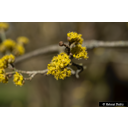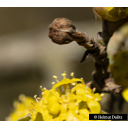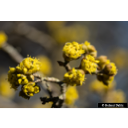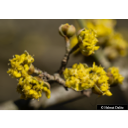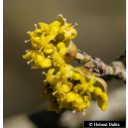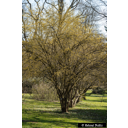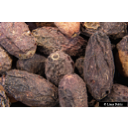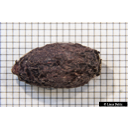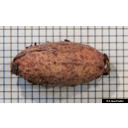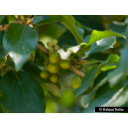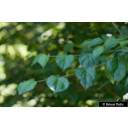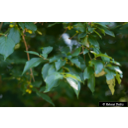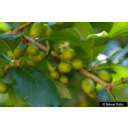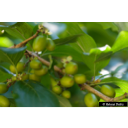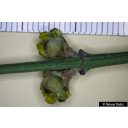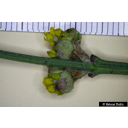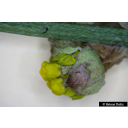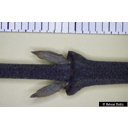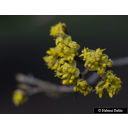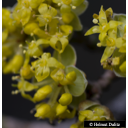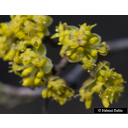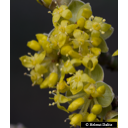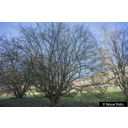Useful information about the taxon (species, subspecies, variety...)
Cornus mas L. 1753
Cornaceae
(APG IV)Cornelian cherry
Akzessionnummer: LG-X-090-21650
Pflanzjahr: 1999
Patenschaftstext: Für Heidi von Christa 05.08.2005
Taxon concept: The Plant List (2014), version 1.1
Distribution: Europe; Turkey, Syria, Caucasus, Iran; introduced on British Isles
Size: 2 - 4 (m)Flowering period: II - IV
Cornus mas L. - Accepted: Cornus mas L. bei The Plant List (2010); Familie: Cornaceae (APG III)Cornus mas L. - Accepted: Cornus mas L. bei Zander 2008; Familie: Cornaceae (Zander 2008)Cornus mas L. - Accepted: Cornus mas L. bei The Plant List (2014), version 1.1; Familie: Cornaceae (APG III)Cornus mas L. - Accepted: Cornus mas L. bei The Plant List (2010); Familie: Cornaceae (APG IV)Cornus mas L. - Accepted: Cornus mas L. bei BfN Checklist Flora DE; Familie: Cornaceae (APG IV)Cornus mas L. - Accepted: Cornus mas L. bei World Flora Online - APG IV (Angiosperms); Familie: Cornaceae (World Flora Online - APG IV (Angiosperms))
- Color of flower
- yellow
- Life form
- shrub, treelet, tree
- Succession type
- pioneer plant, soil stabiliser
- Natural occurrence (habitat)
- sunny scrub, open oak forests, also floodplains, hedgerows, groves, open herbaceous mixed deciduous forests and floodplain forests, edges of forests; from lowland to middle highland
- Natural propagation (all types)
- vegetative reproduction by stem sprouting, root sprouts
- Constraints according soil conditions
- not salt tolerant
- Constraints according temperature
- somewhat thermophilous
Erhardt, W., Götz, E., Bödeker, N. & Seybold, S. (2008): Der große Zander. Enzyklopädie der Pflanzennamen. Band 2. Arten und Sorten. Eugen Ulmer KG, Stuttgart (Hohenheim), 18. Aufl., 2103 S.; Fryer, J. (2015): Salix lucida, shining willow. In: Fire Effects Information System, [Online]. U.S. Department of Agriculture, Forest Service, Rocky Mountain Research Station, Missoula Fire Sciences Laboratory (Producer). See: https://www.fs.fed.us/database/feis/plants/tree/salluc/all.html; Maurizio, Anna et al. (1982): Nektar und Pollen - die wichtigsten Nahrungsquellen der Honigbiene. 4. Ehrenwirth, München, 3, überabeitete Auflage; Pritsch, Günter et al. (1985): Bienenweide.. Neumann-Neudamm, Melsungen; Pritsch, Günter et al. (2007): 200 Trachtpflanzen erkennen und bewerten.. Kosmos, Stuttgart; Schick, B. & Spürgin, A. (1997): Die Bienenweide. Eugen Ulmer Verlag, Stuttgart, Auflage: 4., völlig neubearb. u. erw. A., 216 S. 978-3800174188.; The International Plant Names Index (2009). Published on the Internet http://www.ipni.org; Courtesy to IPNI, 2009. Exported from IPNI at date: 2009-09-22 20:17:51;
Diese Webseite verwendet Google Maps, um Karten und Standorte von Pflanzen in den Hohenheimer Gärten anzuzeigen. Dadurch werden unter Umständen Daten an Google weitergeleitet, was mit einer Verarbeitung Ihrer personenbezogenen Daten verbunden sein kann. Die Datenschutzerklärung von Google finden Sie hier: Datenschutzerklärung von Google


